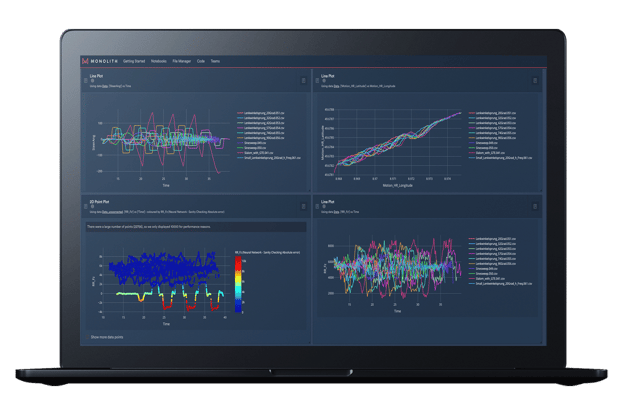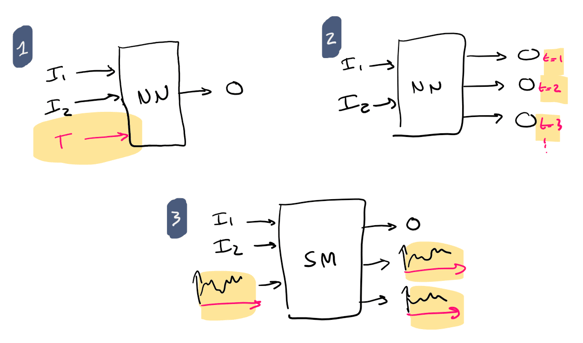Optimised deep learning time series AI model
Introduction
AI has transformed the way we extract insights and make predictions from data. However, commonly used tabular machine learning methods are not well suited for exploiting implicit structure in data, such as time, and therefore, there is a need to adopt new AI models that focus exclusively on learning from sequences.
Deep learning models designed specifically to be aware of sequences are better able to learn and predict relationships in the data that depend on time, or other sequence dimensions.

Vehicle dynamics analysis performed in the Monolith Platform using time series data.
The need for different model types
Time Series data introduces an additional layer of complexity compared to conventional structured tabular data. With series data, our concern extends beyond individual data points; we must consider the temporal aspect - the ordered relationship between data points over time. This temporal dimension allows us to uncover hidden patterns, trends, and dependencies that are crucial for accurate predictions and informed decision-making.
New Monolith feature: CNN-based flexible series model
Recognising the necessity for specialised models to tackle series data, we are proud to introduce a new series model in our platform. This model utilises Convolutional Neural Networks (CNNs) to extract meaningful features from the time dimension of series data. By leveraging filter banks and convolutional operations, our model automatically identifies relevant patterns and dependencies. This provides engineers with enhanced flexibility, improved accuracy, and efficient analysis of series data.

Options 1 (using time as an input) and 2 (predicting output at different time steps) both have limitations, which is why option 3 (using series as inputs and/or outputs) was created. The introduction of the time dimension for each option is shown in red.
How to use it
Our time-series toolbox offers several features to facilitate working with series data:
-
Time-series transformers: These steps enable you to resample or realign time series while extracting additional relevant features. You can apply operations such as derivatives, low pass filters, or moving averages to enhance your data.
Time-Series Transformers enable users to restructure their data (e.g. Resample on the left), or to extract features from their data (e.g. Low pass filter applied on the right)..png?width=583&height=282&name=MicrosoftTeams-image%20(53).png)
-
Series model: This step allows you to train a model using series-based data. It combines both curves (series, such as time series) and values (single scalars) as inputs and outputs in a flexible manner. You can customise the input and output configurations according to your specific needs.
Edit mode of the Series Model step, allowing for a flexible combination of input and.png?width=583&height=379&name=MicrosoftTeams-image%20(54).png)
output curves or values. -
Series prediction: This step provides a convenient way to obtain predictions from a Series Model for an entire dataset at once. The prediction results are added as new columns to the dataset, allowing for exploration and visualisation with other tools within our platform. Such predictions can be integrated to dashboards, as shown below.
.png?width=583&height=359&name=MicrosoftTeams-image%20(55).png)
Series models can be embedded in a dashboard and predict the behaviour of series data (like sensor measurements) ahead of time.
Conclusion
By utilising the temporal dimension of data, engineers can gain deeper insights and drive innovation across a wide range of domains. It is important to note that these series models are not limited to time series alone. They can also be applied to other problems involving series data, such as frequency analysis (e.g., frequency response curve) or material design (e.g., stress-strain curve, see figure below).
Material design (left) and frequency analysis (right) are some of the many other examples
where series data is used.
Our customers have already begun leveraging these models on their platforms, and we are committed to continuous improvement. We encourage you to reach out to us if these models align with your requirements. Embrace the power of series data and unlock a world of possibilities with our advanced time series models.

.png?width=679&height=213&name=MicrosoftTeams-image%20(56).png)
